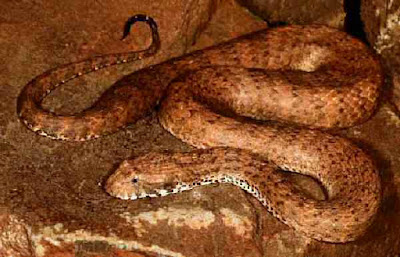You would think that all the snakes in Australia are known. However a new species has been found. It is a death adder in the Acanthopis family. Official named Acanthophis cryptoamudros the Kimberley death adder is two thirds of a meter long. Like many snakes its head is diamond shaped.
Adders hide and blend in with the underbrush then ambush prey. Four legged reptiles and small mammals are the main food. Oddly, the new adder does not look like other adders. It is similar to snakes of other species.
Australia has been a happy hunting ground for scientists recently. Many new animals have been identified. The search goes on in this sparsely populated region of the dry continent. New species include: shark, dolphin, antechinus, seadragon, lizard, fish and spider, , A new water flower has also been discovered.
◆ Biology by Ty Buchanan ◆
●




